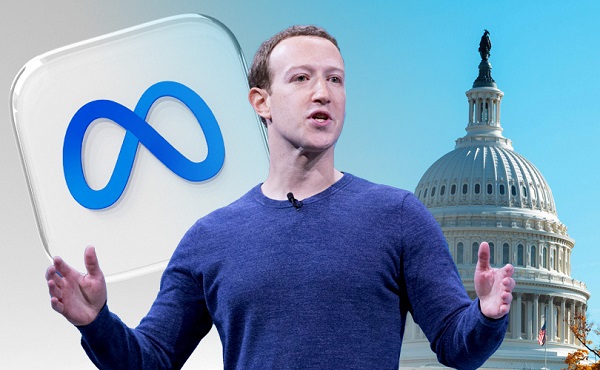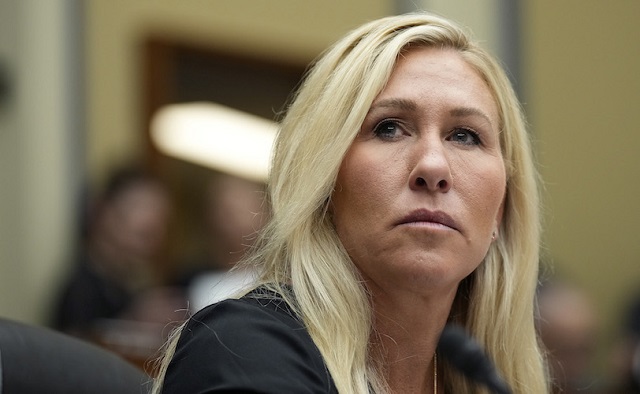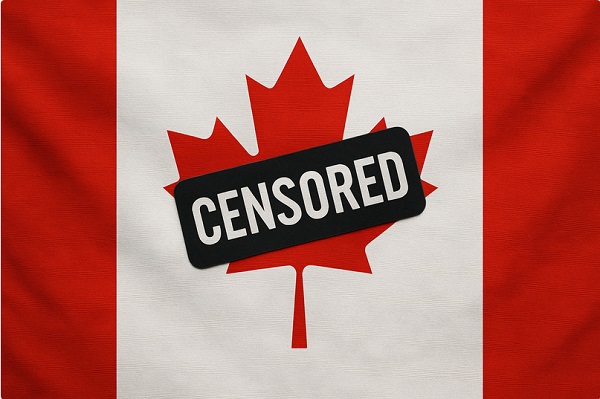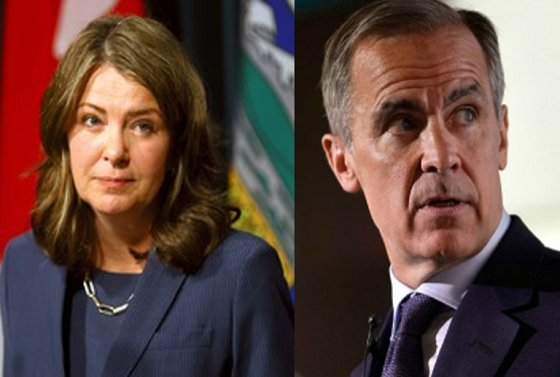Business
Mark Zuckerberg promises end to fact-checkers, says Facebook censorship has ‘gone too far’

From LifeSiteNews
In a surprise early morning post, Mark Zuckerberg took to Instagram to announce that Meta – the parent company of Facebook, Instagram, and Threads – will be taking steps to “dramatically reduce the amount of censorship on our platforms,” while seemingly placing a large share of the blame for past extreme censorship measures on pressure from the Biden administration and legacy media.
“The recent elections feel like a cultural tipping point towards once again prioritizing speech,” noted Zuckerberg, who met with president-elect Donald Trump shortly after his decisive election victory.
Zuckerberg said that while he started building social media “to give people a voice,” “governments and legacy media have pushed to censor more and more.”
“A lot of this is clearly political,” he noted.
He explained that Meta’s complex systems for guarding against harmful content such as drugs, terrorism, and child exploitation have been prone to make mistakes: “It’s just too many mistakes, and too much censorship.”
Following X/Twitter’s lead, Meta platforms will replace “fact-checkers” with “community notes.”
“After Trump first got elected in 2016, the legacy media wrote nonstop about how misinformation was a threat to democracy,” said Zuckerberg, but Meta’s fact checkers have been “too politically biased, and have destroyed more trust than they’ve created.”
Meta will also move its trust and safety and content moderation teams out of California, and its U.S.-based content review will soon be based in Texas.
“We’re going to simplify our content policies and get rid of a bunch of restrictions on topics like immigration and gender that are just out of touch with mainstream discourse,” said Zuckerberg. “It’s gone too far.”
‘It feels like a new era now’
“We’re bringing back civic content,” said Zuckerberg. “For a while, the community asked to see less politics because it was making people stressed. So we stopped recommending these posts. But it feels like we’re in a new era now, and we’re starting to get feedback that people want to see this content again.”
“We’re going to work with President Trump to push back on governments around the world that are going after American companies and pushing to censor more,” said the social media titan.
“The U.S. has the strongest constitutional protections for free expression in the world,” but other countries continue to exert substantial force to limit free speech on the internet.
Zuckerberg explained:
- Europe has an ever-increasing number of laws institutionalizing censorship and making it difficult to build anything innovative there.
- Latin American countries have secret courts that can order companies to quietly take things down.
- China has censored our apps from even working in the country.
“The only way that we can push back on this global trend is with the support of the U.S. government,” he insisted. “And that’s why it’s been so difficult over the past four years when even the U.S. government has pushed for censorship.”
“By going after us and other American companies, it has emboldened other governments to go even further,” he continued. “But now we have the opportunity to restore free expression and I am excited to take it.”
‘Humility’ to now play a role in Meta’s management of its platforms
In his 2019 speech at Georgetown University that portended social media’s crackdown on free speech, especially those expressing thoughts at odds with woke ideology, Zuckerberg claimed, “Some people believe giving more people a voice is driving division rather than bringing us together. More people across the spectrum believe that achieving the political outcomes they think matter is more important than every person having a voice. I think that’s dangerous.”
The changes that were announced by Zuckerberg this morning are an attempt to return to the commitment to free expression he set out in his Georgetown speech, according to Joel Kaplan, Meta’s Chief Global Affairs Officer.
“That means being vigilant about the impact our policies and systems are having on people’s ability to make their voices heard, and having the humility to change our approach when we know we’re getting things wrong.”
However, Facebook has long faced criticism for its harsh censorship regime, including for deplatforming conservative users and censoring speech critical of COVID mandates and the LGBT agenda, in addition to facilitating child sex trafficking.
In 2020, Zuckerberg spent more than $400 million to influence the presidential race that year, which election integrity advocates have credited with likely handing the White House to Joe Biden.
X/Twitter and Facebook headed in opposite directions?
Just as Mark Zuckerberg announced a new era of free speech on Meta’s Facebook, Instagram and Threads, Elon Musk and his social media giant, X (formerly Twitter) seemed to be headed in the opposite direction, toward increased censorship and suppression.
Musk and X were slammed on X over the weekend after new restrictions and punitive measures were revealed for posts critical of X, those that are deemed to be too negative, and even those that “critique or challenge other users or public figures in a way that’s perceived as harsh or personal rather than constructive.”
Business
The world is no longer buying a transition to “something else” without defining what that is

From Resource Works
Even Bill Gates has shifted his stance, acknowledging that renewables alone can’t sustain a modern energy system — a reality still driving decisions in Canada.
You know the world has shifted when the New York Times, long a pulpit for hydrocarbon shame, starts publishing passages like this:
“Changes in policy matter, but the shift is also guided by the practical lessons that companies, governments and societies have learned about the difficulties in shifting from a world that runs on fossil fuels to something else.”
For years, the Times and much of the English-language press clung to a comfortable catechism: 100 per cent renewables were just around the corner, the end of hydrocarbons was preordained, and anyone who pointed to physics or economics was treated as some combination of backward, compromised or dangerous. But now the evidence has grown too big to ignore.
Across Europe, the retreat to energy realism is unmistakable. TotalEnergies is spending €5.1 billion on gas-fired plants in Britain, Italy, France, Ireland and the Netherlands because wind and solar can’t meet demand on their own. Shell is walking away from marquee offshore wind projects because the economics do not work. Italy and Greece are fast-tracking new gas development after years of prohibitions. Europe is rediscovering what modern economies require: firm, dispatchable power and secure domestic supply.
Meanwhile, Canada continues to tell itself a different story — and British Columbia most of all.
A new Fraser Institute study from Jock Finlayson and Karen Graham uses Statistics Canada’s own environmental goods and services and clean-tech accounts to quantify what Canada’s “clean economy” actually is, not what political speeches claim it could be.
The numbers are clear:
- The clean economy is 3.0–3.6 per cent of GDP.
- It accounts for about 2 per cent of employment.
- It has grown, but not faster than the economy overall.
- And its two largest components are hydroelectricity and waste management — mature legacy sectors, not shiny new clean-tech champions.
Despite $158 billion in federal “green” spending since 2014, Canada’s clean economy has not become the unstoppable engine of prosperity that policymakers have promised. Finlayson and Graham’s analysis casts serious doubt on the explosive-growth scenarios embraced by many politicians and commentators.
What’s striking is how mainstream this realism has become. Even Bill Gates, whose philanthropic footprint helped popularize much of the early clean-tech optimism, now says bluntly that the world had “no chance” of hitting its climate targets on the backs of renewables alone. His message is simple: the system is too big, the physics too hard, and the intermittency problem too unforgiving. Wind and solar will grow, but without firm power — nuclear, natural gas with carbon management, next-generation grid technologies — the transition collapses under its own weight. When the world’s most influential climate philanthropist says the story we’ve been sold isn’t technically possible, it should give policymakers pause.
And this is where the British Columbia story becomes astonishing.
It would be one thing if the result was dramatic reductions in emissions. The provincial government remains locked into the CleanBC architecture despite a record of consistently missed targets.
Since the staunchest defenders of CleanBC are not much bothered by the lack of meaningful GHG reductions, a reasonable person is left wondering whether there is some other motivation. Meanwhile, Victoria’s own numbers a couple of years ago projected an annual GDP hit of courtesy CleanBC of roughly $11 billion.
But here is the part that would make any objective analyst blink: when I recently flagged my interest in presenting my research to the CleanBC review panel, I discovered that the “reviewers” were, in fact, two of the key architects of the very program being reviewed. They were effectively asked to judge their own work.
You can imagine what they told us.
What I saw in that room was not an evidence-driven assessment of performance. It was a high-handed, fact-light defence of an ideological commitment. When we presented data showing that doctrinaire renewables-only thinking was failing both the economy and the environment, the reception was dismissive and incurious. It was the opposite of what a serious policy review looks like.
Meanwhile our hydro-based electricity system is facing historic challenges: long term droughts, soaring demand, unanswered questions about how growth will be powered especially in the crucial Northwest BC region, and continuing insistence that providers of reliable and relatively clean natural gas are to be frustrated at every turn.
Elsewhere, the price of change increasingly includes being able to explain how you were going to accomplish the things that you promise.
And yes — in some places it will take time for the tide of energy unreality to recede. But that doesn’t mean we shouldn’t be improving our systems, reducing emissions, and investing in technologies that genuinely work. It simply means we must stop pretending politics can overrule physics.
Europe has learned this lesson the hard way. Global energy companies are reorganizing around a 50-50 world of firm natural gas and renewables — the model many experts have been signalling for years. Even the New York Times now describes this shift with a note of astonishment.
British Columbia, meanwhile, remains committed to its own storyline even as the ground shifts beneath it. This isn’t about who wins the argument — it’s about government staying locked on its most basic duty: safeguarding the incomes and stability of the families who depend on a functioning energy system.
Resource Works News
Business
High-speed rail between Toronto and Quebec City a costly boondoggle for Canadian taxpayers

“It’s a good a bet that high-speed rail between Toronto and Quebec City isn’t even among the top 1,000 priorities for most Canadians.”
The Canadian Taxpayers Federation is criticizing Prime Minister Mark Carney for borrowing billions more for high-speed rail between Toronto and Quebec City.
“Canadians need help paying for basics, they don’t need another massive bill from the government for a project that only benefits one corner of the country,” said Franco Terrazzano, CTF Federal Director. “It’s a good a bet that high-speed rail between Toronto and Quebec City isn’t even among the top 1,000 priorities for most Canadians.
“High-speed rail will be another costly taxpayer boondoggle.”
The federal government announced today that the first portion of the high-speed rail line will be built between Ottawa and Montreal with constructing starting in 2029. The entire high-speed rail line is expected to go between Toronto and Quebec City.
The federal Crown corporation tasked with overseeing the project “estimated that the full line will cost between $60 billion and $90 billion, which would be funded by a mix of government money and private investment,” the Globe and Mail reported.
The government already owns a railway company, VIA Rail. The government gave VIA Rail $1.9 billion over the last five years to cover its operating losses, according to the Crown corporation’s annual report.
The federal government is borrowing about $78 billion this year. The federal debt will reach $1.35 trillion by the end of this year. Debt interest charges will cost taxpayers $55.6 billion this year, which is more than the federal government will send to the provinces in health transfers ($54.7 billion) or collect through the GST ($54.4 billion).
“The government is up to its eyeballs in debt and is already spending hundreds of millions of dollars bailing out its current train company, the last thing taxpayers need is to pay higher debt interest charges for a new government train boondoggle,” Terrazzano said. “Instead of borrowing billions more for pet projects, Carney needs to focus on making life more affordable and paying down the debt.”
-

 COVID-192 days ago
COVID-192 days agoTrump DOJ seeks to quash Pfizer whistleblower’s lawsuit over COVID shots
-

 Crime2 days ago
Crime2 days agoU.S. seizes Cuba-bound ship with illicit Iranian oil history
-

 Business1 day ago
Business1 day agoAlbertans give most on average but Canadian generosity hits lowest point in 20 years
-

 International2 days ago
International2 days agoMarjorie Taylor Greene’s ’60 Minutes’ interview reveals power struggle between populists and RINOs
-

 Daily Caller2 days ago
Daily Caller2 days agoUS Supreme Court Has Chance To End Climate Lawfare
-

 Censorship Industrial Complex2 days ago
Censorship Industrial Complex2 days agoOttawa’s New Hate Law Goes Too Far
-

 Bruce Dowbiggin1 day ago
Bruce Dowbiggin1 day agoCarney Hears A Who: Here Comes The Grinch
-

 National1 day ago
National1 day agoCanada’s free speech record is cracking under pressure







